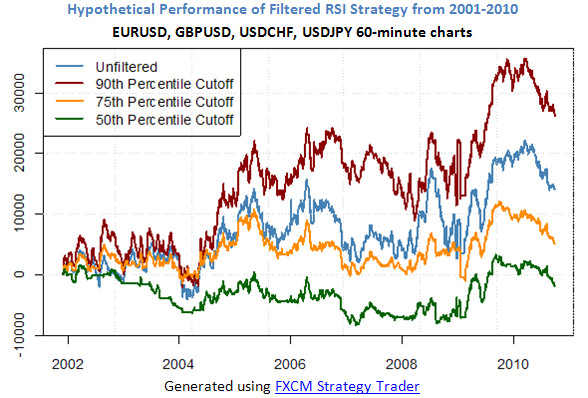Currency Options
Post on: 13 Апрель, 2015 No Comment

A Currency option (also FX, or FOREX option) is a financial product called a derivative where the value is based off an underlying instrument, which in this case is a foreign currency. FX options are call or put options that give the buyer the right (not the obligation) to buy (call) or sell (put) a currency pair at the agreed strike price on the stated expiration date.
FOREX option trading was initially conducted only by large institutions where fund managers, portfolio managers and corporate treasurers would offload risk by hedging their currency exposure in the FX option market. However, currency options are now very popular amounst retail investors as electronic trading and market access is now so widely available.
I thought all FX Options were traded Over the Counter (OTC)?
When currency options first came on the scene, they were indeed traded OTC — where institutions and broker/dealers trade with each other over the phone to hedge their foreign currency exposure. With institutions dealing with transactions in the billions, this makes sense, especially since, unlike stocks/futures/options, there is no central trading location for foreign exchange.
However, many retail online brokerage firms as well as larger institutions provide electronic access to FOREX liquidity pools that also include the trading of currency options online. Many of the options traded via these firms are still considered OTC as the trader (customer) transacts directly with the broker, rather than matching the order with another trader. In this case the broker becomes the counter party to the currency option and hence has to wear the risk.
This also means that currency options can be catered to the individual trader. Without a standardized set of rules dictated by an exchange, a trader can choose the strike/expiry and in rare case the expiration style of the contract that is traded with the broker.
Not all electronic trading destinations for currency options are OTC though. There are firms that provide liquidity pools for institutions to transact with one another often called Dark Pools. For example, HotSpot, FXAll and CurrenX are all liquidity destinations for the FOREX market.
In addition to FOREX liquidity pools and OTC with your broker, currency options are also traded on exchanges. For example, the PHLX (NASDAQ) and the CME both offer currency options on currency futures. These products will also be accessible by most retail online FX option brokers.
What Brokers offer online FX option trading?
Take a look at the list below of brokers who offer online access to the currency option market.
Are currency options riskier than stock options?
I would say that there are two types of risk present when trading foreign exchange options: counter party risk and market risk.
For currency options that are OTC with your broker/dealer, you have what’s known as counterpart risk. That is, the risk that the firm that holds the other side of the transaction goes bust, along with any financial obligation to deliver foreign currency. Any option agreements that you as a trader/client hold with such a company become worthless. Counterparty risk is more present in currency options than stock or futures options because there is no central clearing house to protect option traders when the dealer is unable to meet the exercise obligations.
In terms of market risk, FX options are more sensitive to macroeconomic factors than stock or futures options. Political and/or economic factors play a large role on the view of currencies. Stock options on the other hand, while still affected by macro economic conditions, are also influenced by company specific variables such as earnings reports, downgrades, sector sentiment etc.
FX options are generally European and hence can use a standard B&S model. Like an equity option, currency options can be priced using a standard black and scholes option model with a dividend yield. With a currency option, the dividend yield represents the foreign currency’s continually compounded risk-free interest rate. In the same way, FOREX option pricing will need to consider:
Underlying Price (the Spot FOREX rate)
Interest Rate = Local Currency Interest Rate
Dividend Yield = Foreign Currency Interest Rate
Strike Price = The cross rate at which the currency will be exchanged
Expiration Date = The expiry date of the option
Volatility = The expected future volatility of the exchange rate over the life of the option
The forward price used for the currency option is a combination of both interest rates in each country.
More recent than the Black and Scholes is the Garman and Kohlhagen currency option pricing model. I’ve read that it is exactly the same as the B&S formula for options on dividend paying stocks, though I’ve not seen the exact formula. Check out the following books for more information on currency option pricing.
Suggested Books
The Complete Guide to Option Pricing Formulas
Mastering Foreign Exchange and Currency Options
As I was writing this article I was thinking of the reasons that may help explain why currencies have higher volatility than equities. For some reason, I always assumed that FOREX pairs would have higher volatility than, say, index options. To gauge the magnitude of volatility difference, I began to compare a series of FOREX pairs and a few indices.
I was surprised. Using end-of-day data, equity indices exhibit about double the amount of volatility than the major currency pairs. Take a look at this:
Here is the spreadsheet with the data:
Currency Vs Index Volatility XLS
9.5 years of data was used to compile the above — from the 3rd January, 2000 to 5th August 2009. I calculated both 30 day and 100 day historical volatility and then averaged this across all data sets. Here’s the summary:














